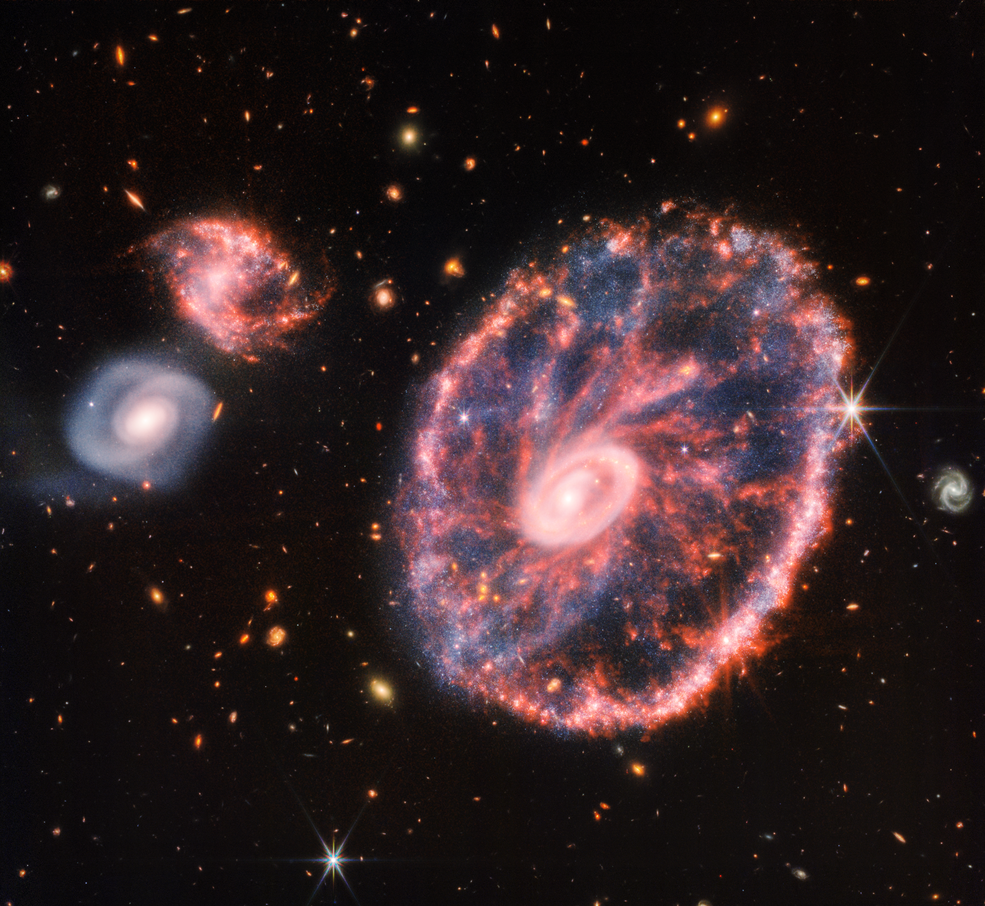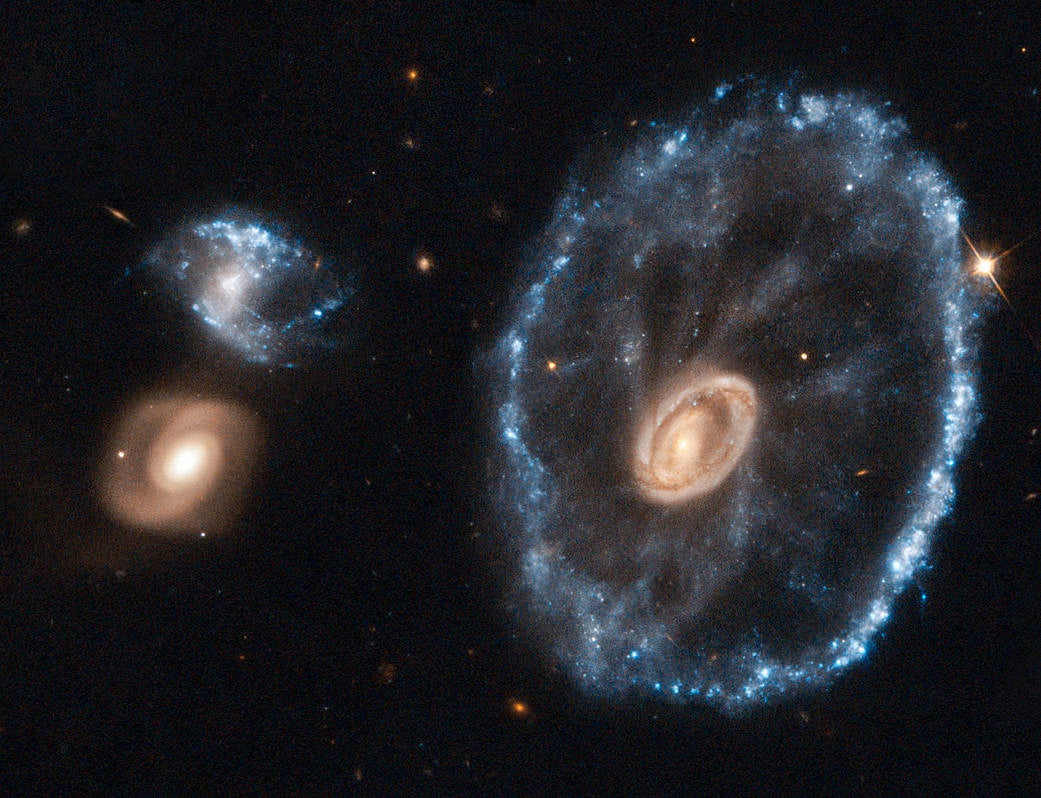Webb telescope reveals colourful cosmic cartwheel
Webb provides another new detailed look at an old Hubble target

Your support helps us to tell the story
From reproductive rights to climate change to Big Tech, The Independent is on the ground when the story is developing. Whether it's investigating the financials of Elon Musk's pro-Trump PAC or producing our latest documentary, 'The A Word', which shines a light on the American women fighting for reproductive rights, we know how important it is to parse out the facts from the messaging.
At such a critical moment in US history, we need reporters on the ground. Your donation allows us to keep sending journalists to speak to both sides of the story.
The Independent is trusted by Americans across the entire political spectrum. And unlike many other quality news outlets, we choose not to lock Americans out of our reporting and analysis with paywalls. We believe quality journalism should be available to everyone, paid for by those who can afford it.
Your support makes all the difference.The James Webb Space Telescope has revealed new details in yet another old Hubble Space Telescope Image, this time returning a sparkling pink and blue image of the distant Cartwheel galaxy, located about 500 million lights years away.
The Cartwheel galaxy was a spiral galaxy like our own Milky Way until a collision with a smaller galaxy began around 440 million years ago. The collision altered the galaxy so that it looks more wheel like, with a bright central ring of young star clusters, and an outer ring dominated by star formation and stars dying in supernovae.
The new Webb image highlights the way Webb’s different instruments can combine to offer scientists new views on the cosmos.
The image is a combination of data from Webb’s Near-Infrared Camera, or NIRCam, and the Mid-Infrared Instrument, or MIRI. NIRCAM is better able to peer through dust and gas to witness young stars and star formation in the distant galaxy. The NIRCAM contributions to the image show up as blue, orange and yellow.
MIRI, meanwhile, picks up the detailed structure of the dust and gas that NIRCam peers through, revealing silica dust and hydrocarbons that show up as red in the image. This dusty material creates massive “spoke”-like structures to the wheel, and can also be seen a 2018 Hubble image of the galaxy.

The new details revealed by Webb will help scientists better understand the past and future evolution of the galaxy as it continues to reel from the collision, according to a Nasa blog.
Join our commenting forum
Join thought-provoking conversations, follow other Independent readers and see their replies
Comments